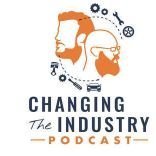Faster Lifts, Value of
-
Available Subscriptions
-
Have you checked out Joe's Latest Blog?
-
By Joe Marconi in Joe's Blog0 commentsIt always amazes me when I hear about a technician who quits one repair shop to go work at another shop for less money. I know you have heard of this too, and you’ve probably asked yourself, “Can this be true? And Why?” The answer rests within the culture of the company. More specifically, the boss, manager, or a toxic work environment literally pushed the technician out the door.
While money and benefits tend to attract people to a company, it won’t keep them there. When a technician begins to look over the fence for greener grass, that is usually a sign that something is wrong within the workplace. It also means that his or her heart is probably already gone. If the issue is not resolved, no amount of money will keep that technician for the long term. The heart is always the first to leave. The last thing that leaves is the technician’s toolbox.
Shop owners: Focus more on employee retention than acquisition. This is not to say that you should not be constantly recruiting. You should. What it does means is that once you hire someone, your job isn’t over, that’s when it begins. Get to know your technicians. Build strong relationships. Have frequent one-on-ones. Engage in meaningful conversation. Find what truly motivates your technicians. You may be surprised that while money is a motivator, it’s usually not the prime motivator.
One last thing; the cost of technician turnover can be financially devastating. It also affects shop morale. Do all you can to create a workplace where technicians feel they are respected, recognized, and know that their work contributes to the overall success of the company. This will lead to improved morale and team spirit. Remember, when you see a technician’s toolbox rolling out of the bay on its way to another shop, the heart was most likely gone long before that.
-
-
Similar Topics
-
By carmcapriotto
Brian and Parker dive into how strategic marketing investment can drive real growth for auto repair shops. Parker shares how increasing his marketing spend transformed his business, leading to record-breaking profits and industry recognition. They discuss why many shop owners hesitate to spend more on marketing and how cutting back can actually slow growth.
They break down the balance between brand-building and direct response marketing, highlighting how both contribute to long-term success. Parker shares insights from industry peer groups and how analyzing successful shops’ financials helped him refine his own strategy. They also explore how even small adjustments in marketing spend can make a big impact.
They explain what it takes to turn marketing into a growth engine, from increasing car count to boosting profitability. With real-world insights and proven strategies, they make the case for why now is the time for shop owners to commit to smarter marketing investments.
Thank you to our friends at RepairPal for this episode. RepairPal will introduce your shop to new customers through repairpal.com, the largest site for auto repair. Learn more at
RepairPal.com/shops.
Declined repairs don’t have to be lost revenue. AppFueled’s call center schedules follow-up calls and equips your team with everything they need to close the deal. Get started now at appfueled.com
Lagniappe (Books, Links, Other Podcasts, etc)
VISION Hi-Tech Training & Expo
Show Notes with Timestamps
How To Get In Touch
Join The Auto Repair Marketing Mastermind Group on Facebook
Meet The Pros
Follow SMP on Facebook
Follow SMP on Instagram
Get The Ultimate Guide to Auto Repair Shop Marketing Book
Email Us Podcast Questions or Topics
Thanks again for listening to The Auto Repair Marketing Podcast on Aftermarket Radio Network. There are some other great shows on the network and you can find them at AftermarketRadioNetwork.com or on your favorite podcast listening apps like Spotify, Apple Podcasts, Google Podcasts, and many others
Thanks to our Partners,
RepairPal at https://repairpal.com/shops. Quality Car Repair. Fair Price Guarantee.
App Fueled at appfueled.com. “Are you ready to convert clients to members? AppFueled™ specializes in creating custom apps tailored specifically for auto repair businesses. Build your first app like a pro.”
Aftermarket Radio Network
Remarkable Results Radio Podcast with Carm Capriotto: Advancing the Aftermarket by Facilitating Wisdom Through Story Telling and Open Discussion
Diagnosing the Aftermarket A to Z with Matt Fanslow: From Diagnostics to Metallica and Mental Health, Matt Fanslow is Lifting the Hood on Life.
The Weekly Blitz with Chris Cotton: Weekly Inspiration with Business Coach Chris Cotton from AutoFix - Auto Shop Coaching.
Speak Up! Effective Communication with Craig O'Neill: Develop Interpersonal and Professional Communication Skills when Speaking to Audiences of Any Size.
Business by the Numbers with Hunt Demarest: Understand the Numbers of Your Business with CPA Hunt Demarest.
The Auto Repair Marketing Podcast with Kim and Brian Walker: Marketing Experts Brian & Kim Walker Work with Shop Owners to Take it to the Next Level.
The Aftermarket Radio Network: https://aftermarketradionetwork.com/
Remarkable Results Radio Podcast with Carm Capriotto: Advancing the Aftermarket by Facilitating Wisdom Through Story Telling and Open Discussion. https://remarkableresults.biz/
Diagnosing the Aftermarket A to Z with Matt Fanslow: From Diagnostics to Metallica and Mental Health, Matt Fanslow is Lifting the Hood on Life. https://mattfanslow.captivate.fm/
Business by the Numbers with Hunt Demarest: Understand the Numbers of Your Business with CPA Hunt Demarest. https://huntdemarest.captivate.fm/
The Auto Repair Marketing Podcast with Kim and Brian Walker: Marketing Experts Brian & Kim Walker Work with Shop Owners to Take it to the Next Level. https://autorepairmarketing.captivate.fm/
The Weekly Blitz with Chris Cotton: Weekly Inspiration with Business Coach Chris Cotton from AutoFix - Auto Shop Coaching. https://chriscotton.captivate.fm/
Speak Up! Effective Communication with Craig O'Neill: Develop Interpersonal and Professional Communication Skills when Speaking to Audiences of Any Size. https://craigoneill.captivate.fm/
Click to go to the Podcast on Remarkable Results Radio
-
By Zenoo
Hi my name is Zenas and I am 26 years old from Alberta, Canada. I started my own automotive repair shop in December 2023. After running it for 1 year I made a little bit of profit. I needed some advice on how I could increase it. Its a 3 bay shop with two 2 post hoists and one 4 post hoist with alignment. I am the only mechanic in the shop as I can't afford to hire anyone at this point. I am charging about $120 per hour for the labor and very minimal mark up on parts. The shop had no customer base when I got it so it took me sometime to build returning customers. If I try to increase the prices on parts the customers run away. Seems like they are calling around the city and going to the cheapest person. My monthly over head cost is about $7000. Whatever I make in a month goes back into next month's rent. Any advices on how to manage this properly from other shop owners?
-
By marxautocenter
Premium Member Content
This content is hidden to guests, one of the benefits of a paid membership. Please login or register to view this content.
-
-
By carmcapriotto
Thanks to our partners, NAPA TRACS and Promotive
Running low on cash? Before panic sets in, it’s time to get strategic. In this episode of Business by the Numbers, Hunt explores practical steps to manage cash flow challenges, cut expenses wisely, and secure financing without sinking your business. Learn what options are available and how to make informed decisions to keep your shop running smoothly.
Understand the root causes of cash flow issues to avoid repeating mistakes. Learn why preserving cash strategically is more effective than slashing every expense. Discover how to leverage credit lines, loans, and alternative financing options safely. Avoid common pitfalls, like cutting critical expenses, that can worsen financial struggles. Develop a plan to stabilize and grow your cash reserves for long-term success.
Thanks to our partner, NAPA TRACS
Did you know that NAPA TRACS has onsite training plus six days a week support?
It all starts when a local representative meets with you to learn about your business and how you run it. After all, it's your shop, so it's your choice.
Let us prove to you that Tracs is the single best shop management system in the business. Find NAPA TRACS on the Web at NAPATRACS.com
Thanks to our partner, Promotive
It’s time to hire a superstar for your business; what a grind you have in front of you. Introducing Promotive, a full-service staffing solution for your shop. Promotive has over 40 years of recruiting and automotive experience. If you need qualified technicians and service advisors and want to offload the heavy lifting, visit www.gopromotive.com.
Paar Melis and Associates – Accountants Specializing in Automotive Repair
Visit us Online: www.paarmelis.com
Email Hunt: [email protected]
Download a Copy of My Books Here:
Wrenches to Write-Offs Your Perfect Shop
The Aftermarket Radio Network: https://aftermarketradionetwork.com/
Remarkable Results Radio Podcast with Carm Capriotto https://remarkableresults.biz/
Diagnosing the Aftermarket A to Z with Matt Fanslow https://mattfanslow.captivate.fm/
Business by the Numbers with Hunt Demarest https://huntdemarest.captivate.fm/
The Auto Repair Marketing Podcast with Kim and Brian Walker https://autorepairmarketing.captivate.fm/
The Weekly Blitz with Chris Cotton https://chriscotton.captivate.fm/
Speak Up! Effective Communication with Craig O'Neill https://craigoneill.captivate.fm/
Click to go to the Podcast on Remarkable Results Radio
-
-
-
Our Sponsors















Recommended Posts
Create an account or sign in to comment
You need to be a member in order to leave a comment
Create an account
Sign up for a new account in our community. It's easy!
Register a new accountSign in
Already have an account? Sign in here.
Sign In Now